
[nggallery id=17]

[nggallery id=17]
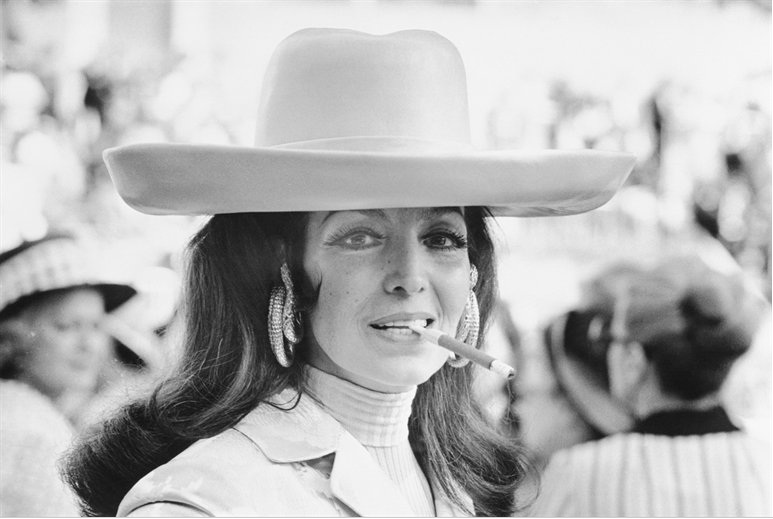 María Félix wearing her Serpent Clip earrings, 1971
María Félix wearing her Serpent Clip earrings, 1971
The Cartier Collection reflects the evolution of Cartier's artistic and stylistic creation. Cartier: The Power of Style traces 160 years in the jeweler's glorious history. Three hundred and sixty-two pieces from the Cartier Collection--accessories, masterpieces of jewelry and watchmaking from the end of the nineteenth century to the present day--and four exceptional pieces from the Prince's Palace of Monaco are featured. These exceptional items offer insight into the royal jeweler's treasures and the sources of inspiration that lead to their creation. Commissioned photographs of these rare pieces, exclusive archival images, and biographical stories about their prestigious owners comprise this handsome volume.
 Pair of Tiger ear clips, Cartier Paris, special order, 1961
Pair of Tiger ear clips, Cartier Paris, special order, 1961
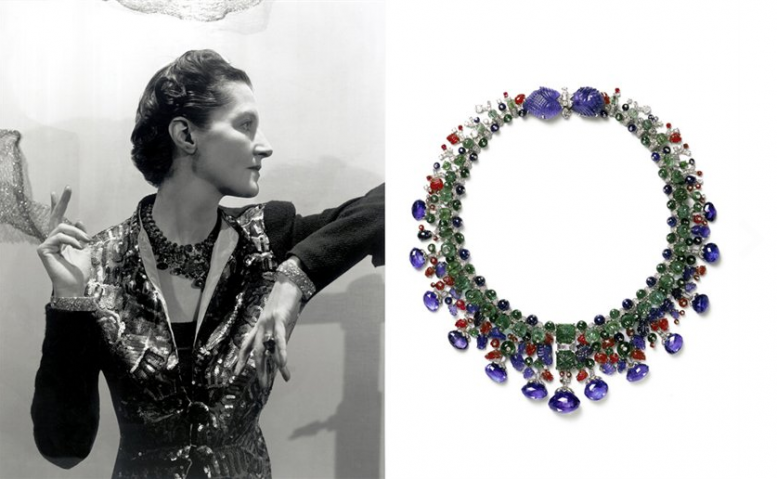 Daisy Fellowes wearing the Tuttie Frutti necklace made of emeralds, rubies, sapphires, and diamonds, made in 1936
Daisy Fellowes wearing the Tuttie Frutti necklace made of emeralds, rubies, sapphires, and diamonds, made in 1936
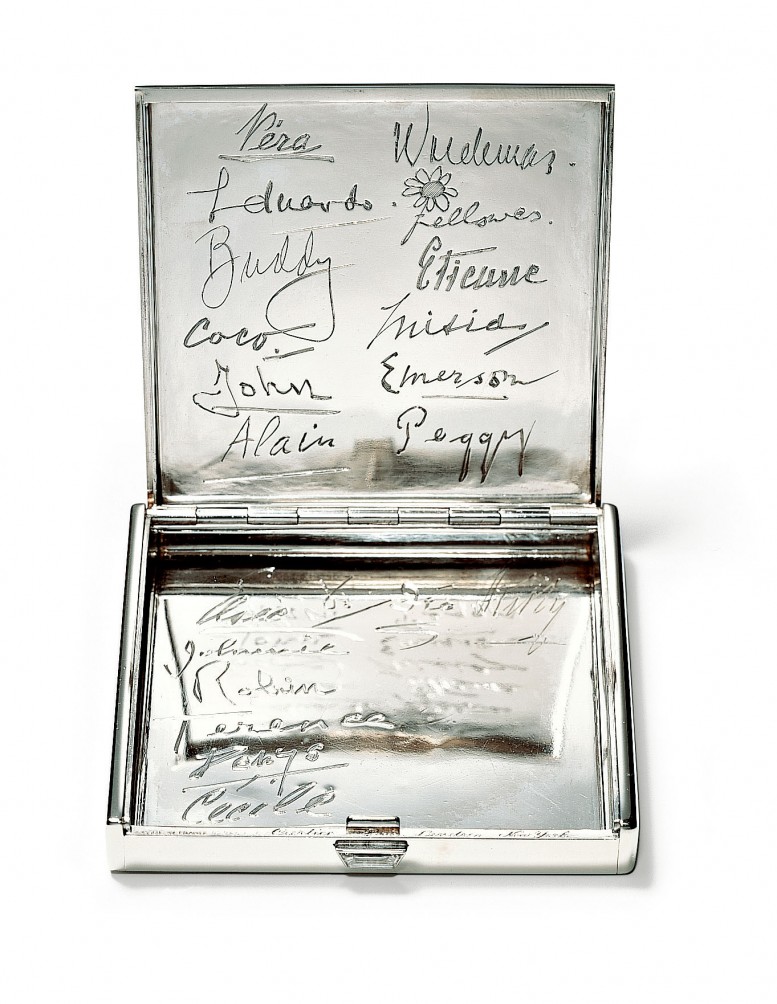 Cigarette case, Cartier Paris, 1931, Platinum, modified baguette-cut diamond, The back of the lid is engraved with twenty signatures such as “Coco” for Coco Chanel, “Misia” for Misia Sert, “Fellowes” for Daisy Fellowes, “Vera” for Vera de Bosset, “Peggy” for Peggy Guggenheim, “Etienne” for Etienne de Beaumont, inside the case “Cécile” for Cécile Sorel, “Elsie” for Elsie de Wolfe, “Johnnie” for Prince Jean-Louis de Faucigny- Lucinge, and other friends unfortunately impossible to identify today. Sold to the Baron de Meyer, photographer
Cigarette case, Cartier Paris, 1931, Platinum, modified baguette-cut diamond, The back of the lid is engraved with twenty signatures such as “Coco” for Coco Chanel, “Misia” for Misia Sert, “Fellowes” for Daisy Fellowes, “Vera” for Vera de Bosset, “Peggy” for Peggy Guggenheim, “Etienne” for Etienne de Beaumont, inside the case “Cécile” for Cécile Sorel, “Elsie” for Elsie de Wolfe, “Johnnie” for Prince Jean-Louis de Faucigny- Lucinge, and other friends unfortunately impossible to identify today. Sold to the Baron de Meyer, photographer
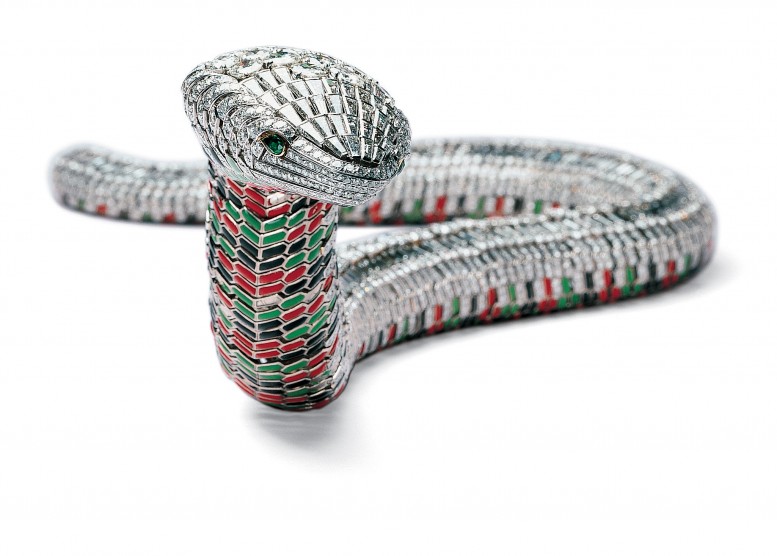 Snake necklace, Cartier Paris, special order, 1968, Platinum, white gold and yellow gold, 2,473 brilliant- and baguette-cut diamonds weighing 178.21 carats in total, two pear-shaped emeralds (eyes), green, red, and black enamel, Made as a special order for María Félix
Snake necklace, Cartier Paris, special order, 1968, Platinum, white gold and yellow gold, 2,473 brilliant- and baguette-cut diamonds weighing 178.21 carats in total, two pear-shaped emeralds (eyes), green, red, and black enamel, Made as a special order for María Félix
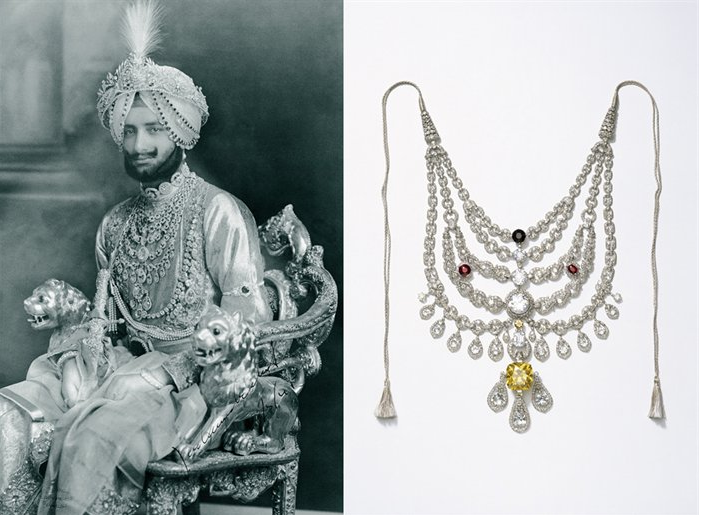 Sir Yadavindra Singh, wearing a ceremonial necklace, Cartier, created in 1936
Sir Yadavindra Singh, wearing a ceremonial necklace, Cartier, created in 1936
You can find Cartier: The Power of Style here.
[slideshow id=9]click to browse images
There's something about women and girls dressed in fashion designed for the opposite sex: you can spot them from a mile away. It's a powerhouse 'i can do anything better than you can' attitude strutting down the street in biker boots, at an afternoon symphony in loafers with tassels, or at a cocktail party in black and white wingtips. Some of the most influential, inspiring women throughout creative history have been known to frequently don a more masculine ensemble: Marlene Dietrich, Patti Smith, Lou Doillon, Chloe Sevigny and even Shiloh Jolie Pitt have at times been partial to men's wear. A sense of allure and mystery has and will always accompany these women in their style. Although menswear for women will forever be in, the style is coming to a peak this year. Fall/Winter 2011 collections are promising layered blazers, silk slacks, and men's wool coats galore. Need a go-to shop to outfit yourself in androgyny? A safe and successful bet you'll always find at Opening Ceremony and for those of you helping the littlest of the style hungry, don't forget to check out the "borrowed from my brother" section of Jenna Lyons' ingenious kid's line Crewcuts at J-Crew.
Text by Lily Harris for Pas Un Autre
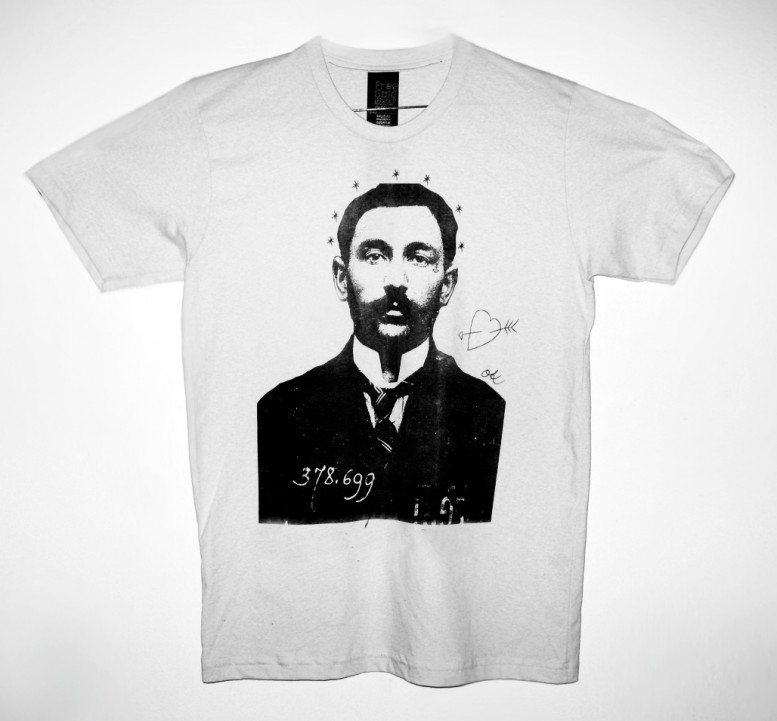
Vincenzo Peruggia is resurrected on this amazing t-shirt designed by Oliver Maxwell Kupper for Free Gold Watch. In 1911 Vincenzo Peruggia perpetrated what has been described as the greatest art theft of the 20th century. Common reports state that Perrugia hid inside the museum on Sunday, August 20, knowing that the museum would be closed the following day, and emerged the next day, entered the Salon Carre where the Mona Lisa hung, took the painting off the wall, and then to a stairwell where he removed it from a protective case, hid it under his smock and made a run for it. In actuality, Peruggia did not hide in museum overnight, but simply walked in at 7 a.m. Monday morning with a workman. Moreover, Peruggia did not hide the painting under his smock - the Mona Lisa is 21x30 inches - too big - he took off his smock and wrapped it around the painting. He then left the Louvre with it, passing a guard station which had been left unattended by a guard who had gone to obtain a pail of water. Vincenzo hid the painting in his apartment in Paris. Supposedly, when police arrived to search his apartment and question him, they accepted his alibi that he had been working at a different location on the day of the theft. After keeping the painting hidden in a trunk in his apartment for two years, Peruggia returned to Italy with it. He kept it in his apartment in Florence but grew impatient and was finally caught when he contacted Alfredo Geri, the owner of an art gallery in Florence, Italy. Geri's story conflicts with Peruggia's, but it was clear that Peruggia expected a reward for returning the painting to what he regarded as its "homeland." Geri called in Giovanni Poggi, director of the Uffizi Gallery, who authenticated the painting. Poggi and Geri, after taking the painting for "safekeeping," informed the police, who arrested Peruggia at his hotel. After its theft, the painting was exhibited all over Italy with banner headlines rejoicing its return and then returned to the Louvre in 1913. Peruggia was released from jail after a short time and served in the Italian army during World War I. He got married, and returned to Paris to continue his profession as a painter. He died on October 8, 1925 (his 44th birthday). Images of full collection of tees coming soon. As a special exclusive to Pas Un Autre readers inquire within on how to acquire the above t-shirt info@pasunautreblog.com
update: amendments (see below comment) to this post have been made by Joseph Medeiros who is currently producing a documentary about Vincenzo Peruggia entitled The Missing Piece which elucidates many of the falsehoods and rumors associated with the legend of Vincenzo Peruggia. www.monalisaismissing.com